Biosensor-integrated transposon mutagenesis reveals rv0158 as a coordinator of redox homeostasis in Mycobacterium tuberculosis
- PMID: 37642294
- PMCID: PMC10501769
- DOI: 10.7554/eLife.80218
Biosensor-integrated transposon mutagenesis reveals rv0158 as a coordinator of redox homeostasis in Mycobacterium tuberculosis
Abstract
Mycobacterium tuberculosis (Mtb) is evolutionarily equipped to resist exogenous reactive oxygen species (ROS) but shows vulnerability to an increase in endogenous ROS (eROS). Since eROS is an unavoidable consequence of aerobic metabolism, understanding how Mtb manages eROS levels is essential yet needs to be characterized. By combining the Mrx1-roGFP2 redox biosensor with transposon mutagenesis, we identified 368 genes (redoxosome) responsible for maintaining homeostatic levels of eROS in Mtb. Integrating redoxosome with a global network of transcriptional regulators revealed a hypothetical protein (Rv0158) as a critical node managing eROS in Mtb. Disruption of rv0158 (rv0158 KO) impaired growth, redox balance, respiration, and metabolism of Mtb on glucose but not on fatty acids. Importantly, rv0158 KO exhibited enhanced growth on propionate, and the Rv0158 protein directly binds to methylmalonyl-CoA, a key intermediate in propionate catabolism. Metabolite profiling, ChIP-Seq, and gene-expression analyses indicate that Rv0158 manages metabolic neutralization of propionate toxicity by regulating the methylcitrate cycle. Disruption of rv0158 enhanced the sensitivity of Mtb to oxidative stress, nitric oxide, and anti-TB drugs. Lastly, rv0158 KO showed poor survival in macrophages and persistence defect in mice. Our results suggest that Rv0158 is a metabolic integrator for carbon metabolism and redox balance in Mtb.
Keywords: Mycobacterium tuberculosis; carbon source; endogenous ROS; infectious disease; lipid metabolism; methylcitrate cycle; microbiology; mycobacterium tuberculosis; redoxosome.
© 2023, Shee et al.
Conflict of interest statement
SS, RV, KM, MD, NM, DB, HB, SB, SN, SN, VS, CT, RR, NC, SL, MS, AS, AS, AS No competing interests declared
Figures

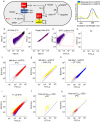


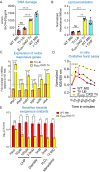
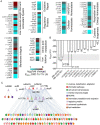







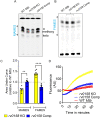
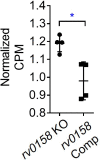



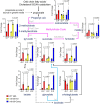



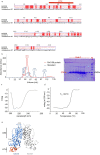
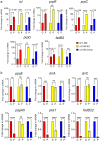




Update of
- doi: 10.21203/rs.3.rs-1383880/v1
Similar articles
-
Reengineering redox sensitive GFP to measure mycothiol redox potential of Mycobacterium tuberculosis during infection.PLoS Pathog. 2014 Jan 30;10(1):e1003902. doi: 10.1371/journal.ppat.1003902. eCollection 2014 Jan. PLoS Pathog. 2014. PMID: 24497832 Free PMC article.
-
Mycobacterium tuberculosis WhiB3 maintains redox homeostasis by regulating virulence lipid anabolism to modulate macrophage response.PLoS Pathog. 2009 Aug;5(8):e1000545. doi: 10.1371/journal.ppat.1000545. Epub 2009 Aug 14. PLoS Pathog. 2009. PMID: 19680450 Free PMC article.
-
Rv3371, a triacylglycerol synthase promotes survival of Mycobacterium tuberculosis in the host through its contributions to redox homeostasis and propionate detoxification.Tuberculosis (Edinb). 2025 May;152:102617. doi: 10.1016/j.tube.2025.102617. Epub 2025 Feb 21. Tuberculosis (Edinb). 2025. PMID: 40020280
-
Intracellular peroxynitrite perturbs redox balance, bioenergetics, and Fe-S cluster homeostasis in Mycobacterium tuberculosis.Redox Biol. 2024 Sep;75:103285. doi: 10.1016/j.redox.2024.103285. Epub 2024 Jul 31. Redox Biol. 2024. PMID: 39128229 Free PMC article. Review.
-
Redox homeostasis in mycobacteria: the key to tuberculosis control?Expert Rev Mol Med. 2011 Dec 16;13:e39. doi: 10.1017/S1462399411002079. Expert Rev Mol Med. 2011. PMID: 22172201 Free PMC article. Review.
Cited by
-
Loss of the PPE71-esxX-esxY-PPE38 locus drives adaptive transcriptional responses and hypervirulence of Mycobacterium tuberculosis lineage 2.Sci Adv. 2025 Jul 4;11(27):eadw5194. doi: 10.1126/sciadv.adw5194. Epub 2025 Jul 2. Sci Adv. 2025. PMID: 40601738 Free PMC article.
References
-
- Anand K, Tripathi A, Shukla K, Malhotra N, Jamithireddy AK, Jha RK, Chaudhury SN, Rajmani RS, Ramesh A, Nagaraja V, Gopal B, Nagaraju G, Narain Seshayee AS, Singh A. Mycobacterium tuberculosis SufR responds to nitric oxide via its 4Fe-4S cluster and regulates Fe-S cluster biogenesis for persistence in mice. Redox Biology. 2021;46:102062. doi: 10.1016/j.redox.2021.102062. - DOI - PMC - PubMed
Publication types
MeSH terms
Substances
Associated data
- Actions
- Actions
Grants and funding
LinkOut - more resources
Full Text Sources
Molecular Biology Databases
Research Materials

